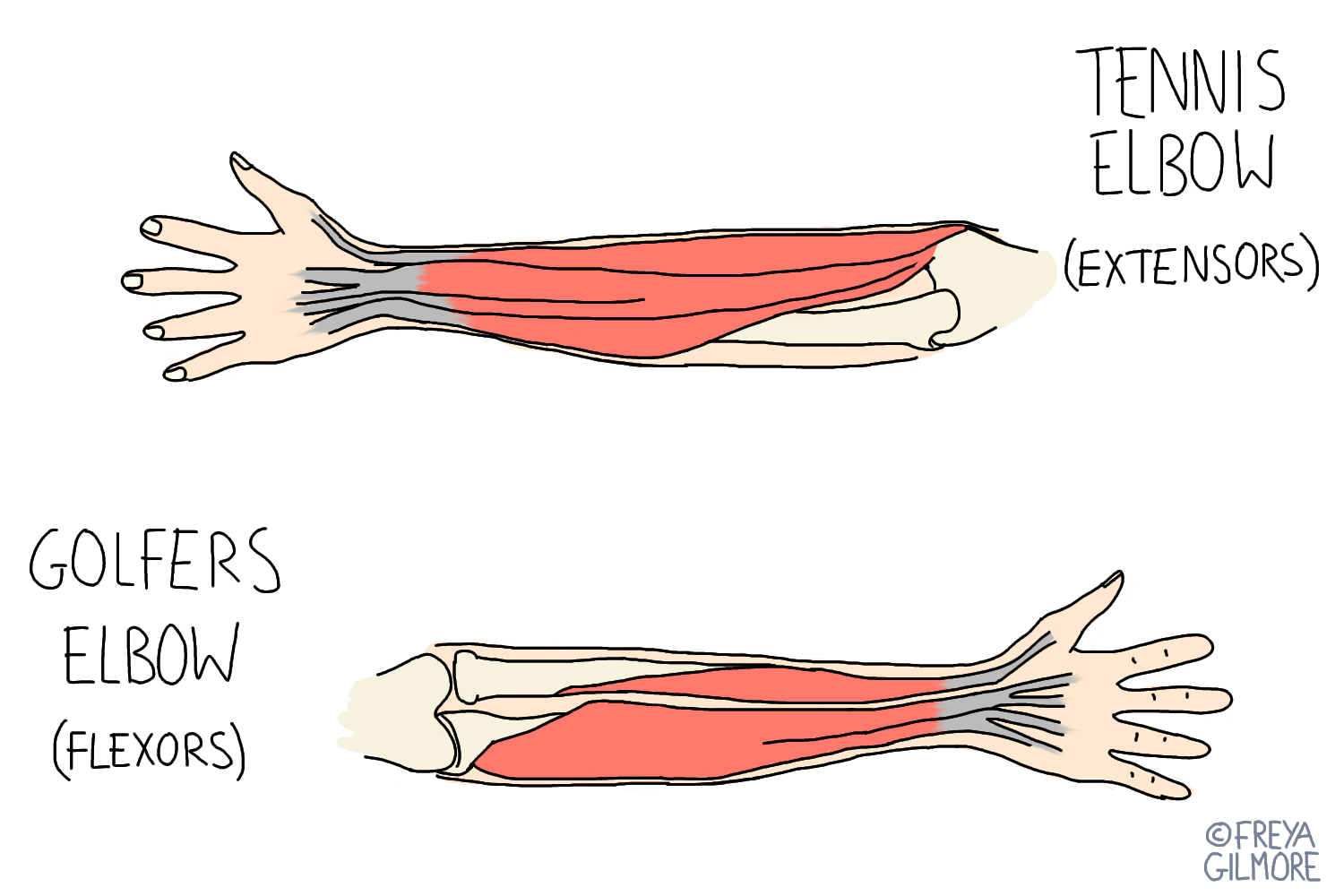Tennis Elbow
Also known as Lateral Epicondylitis, Tennis Elbow is more than just a pulled muscle. The muscles that extend the wrist (pull it back) attach to the outside of the elbow. Through repetitive strain and inflammation, the spot where muscle and bone meet can become sore.
Symptoms of Tennis Elbow
As there is inflammation present, there may be local:
pain
heat
swelling
redness
However, more mild cases may only have pain and slight heat. Pain is made worse by using those wrist muscles, especially while weight-bearing. Examples of this would be extending your wrist while carrying heavy shopping, or to lift a full kettle off the worktop.
Symptoms may get worse overnight, particularly if you sleep with your wrist fully extended or fully flexed. Trying to change the position you sleep in is difficult, so the best solution may be to wear a splint to bed. Generally we advise that you do not wear it during the day too, as some degree of motion is good. We can help advise you on the right splint for you- it’s important you don’t wear one that is too tight. This could lead to other complications such as carpal tunnel syndrome.
Golfer's Elbow
The same problem can happen on the inside of the elbow where the wrist flexors attach. This is known as golfer's elbow, although just like tennis elbow, you don't have to play the sport to develop it.
This condition is caused and aggravated by wrist flexion, where you curl the hand in. Despite the names, this movement is also required in tennis, so it is possible to develop golfer’s elbow from tennis.
Management
If you think you have the early stages of epicondylitis, you might benefit from gently massaging the muscles yourself, and applying a cool compress. You could also speak to your pharmacist about using anti-inflammatory medications. Catching the condition before it fully develops may mean you can avoid it completely, so book in if you notice a low grade soreness in the area.
Movement is good to flush the inflammation away, but excessive exercise will make it worse. Some cases of tennis elbow are quick to resolve with massage-type techniques to the muscles of the forearm. Others respond well to more work through the elbow joints. We will work out a treatment plan that is tailored to you at your appointment.
Your osteopath will also aim to work out why this has happened in the first place. Sometimes the wrist overworks to compensate for restriction elsewhere, such as in the elbow. A sudden increase in demand on these muscles can also be a factor. If you’re thinking of starting a new sport, make sure to warm up and cool down effectively, and not to do too much too quickly.
Tennis and golfer's elbow can also be aggravated by gripping something thin. If your epicondylitis is associated with a racket sport, it may be beneficial to add extra grip to your racket. There may also be changes that you can make to the way you play. Your osteopath can discuss this with you when you come into clinic.
To book an appointment in Flitwick for your golfer’s elbow or tennis elbow, click here.

